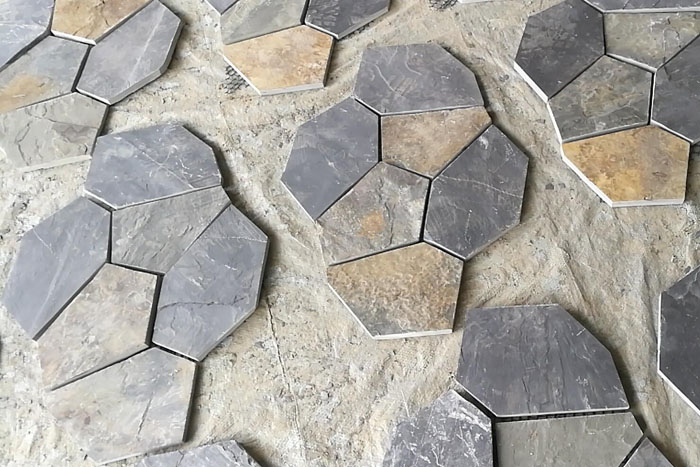Ice crack is one of the traditional patterns in our country, and it has been widely used in porcelain, architectural decoration and garden landscape. In the garden landscape, the pattern of ice cracks often appears in the paving of garden roads and courtyards, and has been used since ancient times. The ice crack paving is not limited to size, form and specification, so it is dynamic and coherent. Because of its unique pattern, simple and natural natural beauty, it is highly ornamental and artistic.

Ice cracks in stone are usually made up of several irregularly shaped and equal-thick stones. The overall paving effect is similar to that of an antique vase. Because the composition of a single piece is mostly irregular, it is also called a polygonal combination stone, and sometimes it is also called an irregular stone.
Stone ice cracks, chaotic stone slabs and mosaic stones often cause confusion. There are specific differences between them: chaotic stone slabs are scraps (thickness and size) produced during the processing process after being transported to the construction site according to the The site conditions are spliced at will. Although there is also an ice crack effect, there is no rule to follow. The ice crack stone is laid by a few special-shaped stones as a unit area (that is, a group), and each group can be seamlessly connected. , The overall listing is regular to follow; although mosaic stones can also spell the effect of ice cracks, the shape and size of each mosaic stone are the same, without the randomness and wild interest of ice cracks.